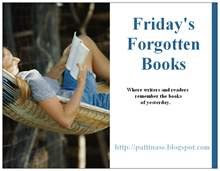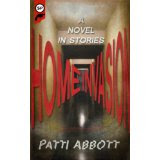 Truman Capote reading.
Truman Capote reading.Chris Grabenstein is the Anthony award winning author of TILT-A-WHIRL. Other crime novels include HELL HOLE, SLAY RIDE and WHACK A MOLE and HELL FOR THE HOLIDAYS. He is also the author of a middle-school series. You can find him here.
Mad’s Al Jaffe Spews Out Snappy Answers To Stupid Questions, Al Jaffe
As one who writes my
 steries with a smart aleck narrator, I thought I should recognize the forgotten classic that helped turn me into such a wise guy at the age of thirteen, even though it’s not a mystery. In fact, it’s not even a real book.
steries with a smart aleck narrator, I thought I should recognize the forgotten classic that helped turn me into such a wise guy at the age of thirteen, even though it’s not a mystery. In fact, it’s not even a real book.It’s Mad’s Al Jaffe Spews Out Snappy Answers To Stupid Questions, which originally sold for 75 cents back in 1968 when I, having saved up all year, purchased it while on vacation in Saint Petersburg, Florida at Webb City, this department store where they used to have live mermaids you could talk to on a conch-shell telephone.
What’s the book about?
Well, to quote the cartoon on the front cover:
It’s about moronic questions like that one…and clever answers like these:
It’s about seven inches tall, 4 inches wide, and 192 pages thick.
It’s about the most ridiculous idea for a book ever conceived.
It’s about time that idiot out there stopped reading this cover and bought it.
Yes, the humor is juvenile but I was thirteen when I first bought it. I recently picked up a used copy from Amazon Marketplace as research for a YA book I’m working on. I wanted to remember what it felt like when I was a chubby kid with zero athletic ability whom bullies would constantly pick on and Snappy Answers became my combat training manual since if you could make ‘em laugh they sometimes forgot about pummeling you.
I started remembering all the Mad magazines and Mad books I had forgotten having read when I was on a panel of Young Adult authors and the moderator asked, “What books influenced you the most when you were a child?” All the other panelists gave the correct answers: The Hardy Boys, Nancy Drew, Sherlock Holmes, The Count of Monte Cristo. I decided to be honest and said, “Mad magazine.” After the panel, about a dozen people came up to say, “Me, too!”
And when I think about the cynical voice of so many the hard boiled P.I.s I love, the sarcastic cops, the snide no-B.S. commentary of John D. MacDonald or Raymond Chandler, I think about Mad Magazine and how it was the first publication to help me look at the world with a somewhat jaded eye. Not all the way to jaundiced. Just jaded.
And, as a writer-in-training, I always found it fantastic that Mr. Jaffe left the last balloon in his cartoon panels blank, inviting the reader to come up with a snappy answer of their own. To top him.
So, play along. On page 98-99 we see a prison guard catching an inmate in his striped suit crawling out of a tunnel on the far side of the penitentiary wall:
GUARD: TRYING TO BREAK OUT, EH?
ESCAPEE: No, in! I’ve heard so many wonderful things about this place.
No, I’m just testing the security system here.
No, I’m a rare giant striped mole.
****************
Mack Lundy grew up in an Air force family whose travels included a posting to Pretoria, South Africa (1952-56) where he acquired an English accent, a fondness for ginger beer, and exposure to his first mysteries, Enid Blyton's Famous Five series. Alas, he lost the accent but still likes ginger beer and mysteries. He is now the systems librarian at the Swem Library of the College of William and Mary in Williamsburg, Virginia. His non-work interest is the study of crime fiction, particularly noir and hard-boiled. You can find him here.
HAVE SPACESUIT, WILL TRAVEL. Robert A. Heinlein, Charles Scrib
 ner's Sons, 1958.
ner's Sons, 1958.TUNNEL IN THE SKY. Robert A. Heinlein, Charles Scribner's Sons, 1955.
For my forgotten books I want to go back to the time when my reading habits had started to firm up. Along with reading everything in the school library by John Steinbeck, science fiction was my preferred genre. The 1960s were a remarkable time for science. The launch of Sputnik 1 in 1957 started the Space Race which gave us cosmonauts and astronauts in space by 1961. It is little wonder that a teenager would find himself obsessed with hard science fiction and off-world travel. I loved science fiction and adventure stories and one author really stood out, Robert A. Heinlein. Sure I read Isaac Asimov and Arthur C. Clarke but it was Heinlein's juvenile science fiction that could combine pulse pounding excitement with hard science.Several decades ago I acquired seven of Heinlein's juvenile science fiction novels that were being discarded from a school library. They remained boxed while I moved from job to job. When I got them out of the attic for this post, I found that two of the titles I most fondly remembered were there, Have Space Suit - Will Travel and Tunnel in the Sky. Being a librarian I wanted to see if there was some way to measure if these qualified as forgotten books. We have a very active public library in Williamsburg, VA and they were able to tell me that Have Space Suit - Will Travel has circulated 72 times since 1985. That doesn't make it entirely forgotten but it is by no means a Harry Potter or Twilight. Tunnel in the Sky, on the other hand, has been checked out once, making it a truly forgotten book.Have Space Suit- Will Travel (anyone else remember Paladin) is the story of teenager Kip Russell who who wins a functional space suit as a consolation prize in a soap company jingle contest. Making the best of his disappointment at not wining the grand prize of a trip to the moon, Kip restores the suit to space worthiness. He goes out for a walk in the suit one night, answers a distress call on his suit radio, and quickly finds himself a captive of aliens who view humans as a food source along with an eleven year old human girl genius named Peewee and an intergalactic cop that Kip and Peewee call the Mother Thing. The story has an amazing escape attempt on the moon, heroic acts of self-sacrifice on Pluto, and, along the way, Kip and Peewee save the earth from destruction. Heady stuff, I get goosebumps just thinking about it. One of the cool things about this book is that Heinlein makes science a part of the story in a non-pedantic way. I would have thought that staying warm would be a problem on the moon but no, I learned, it's how to get rid of excess heat.Tunnel in the Sky has another teenage boy who finds himself in extraordinary circumstances. In Rod Walker's world, an interstellar teleporter is used to establish colonies to ease earth's over crowding. The colonies have to be self-supporting and the colonists move through the teleporter in a high-tech - but still pulled by horse or mule - version of the old west Conestoga wagon. Rod wants to lead these expeditions but that requires completion of a solo survival exercise as part of a class in advanced survival. Along with students from various high schools which gives the plot the necessary mix of ages and abilities, Rod is dumped on an unknown planet with only the gear he can carry. Something goes wrong and the students find themselves stranded with no way of knowing when, or if, they will be rescued. The students struggle to form a community in which Rod becomes a leader.Where Have Suit - Will Travel features hard science, Tunnel in the Sky deals more with the societal demands associated with creating a community and the politics of leadership. More so than Have Space Suit - Will Travel, for me, Tunnel in the Sky is in the "how would I act in that situation, would I survive" school of adventure fiction. It made me think and I remember coming away from the book wishing that I could carry a knife.With the benefit of hindsight I can now see that Heinlein, in his juvenile science fiction, was developing the character types and philosophies that would mark his adult works. I was also struck by how readable these books remain. They are dated in many ways; slide rules are high tech. and the guys wear crew cuts. But despite the bits of patronizing sexism (mild for the day), Heinline provided strong, independent female characters. At the core these are still solid, relevant, stories that I wouldn't hesitate to recommend to a young person.
Cullen Gallagher
Pete Dragovich
Barrie Summy
Ray
Martin Edwards
Cathy Cole
Bill Crider
Lesa Holstine
James Reasoner
Scott D. Parker
Jacob Weaver
Paul Bishop
J. Kingston Pierce
George Kelley
Randy Johnson
Todd Mason
Juri Nummelin















6 comments:
Heinlein wrote some great adventure SF back in the day.
I'm going to do a Forgotten books post next week on some old fashioned space opera.
I had forgotten how much I enjoyed Heinlein's work before he went off the rails in later years and became obsessed with sex (my opinion).
I'm looking forward to your post on space opera.
Sadly, it's the kind of day where I have to post mine piecemeal.
Thanks for posting the recommendations! Science Fiction, in particular, is a genre I am not very familiar with, but would like to venture into. Being a big Fredric Brown fan, I have several of his sci-fi novels that I still have yet to read. But it's great to read these reviews and start taking mental notes.
Too many good books out there...which, is ok by me!
I am definitely lacking in Sci-Fi and Horror and Westerns. Be glad you're young enough to get to most of them.
My older brothers bought Mad Magazine and Mad books regularly, which I was able to read later on. 75 cents in 1968 was lots of money. I made 35 cents/hour babysitting that year.
I loved Robert Heinlein in the late 60s and early 70s, though I haven't read him since. I need to return.
Post a Comment